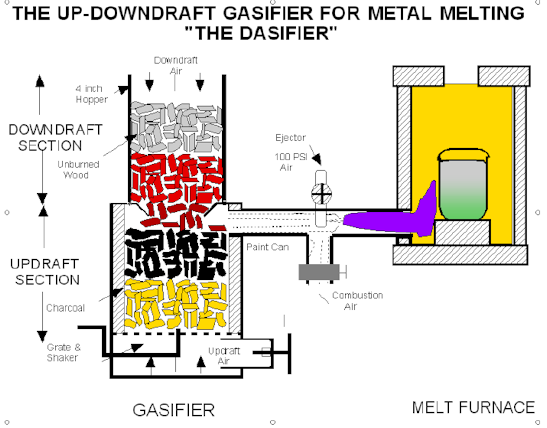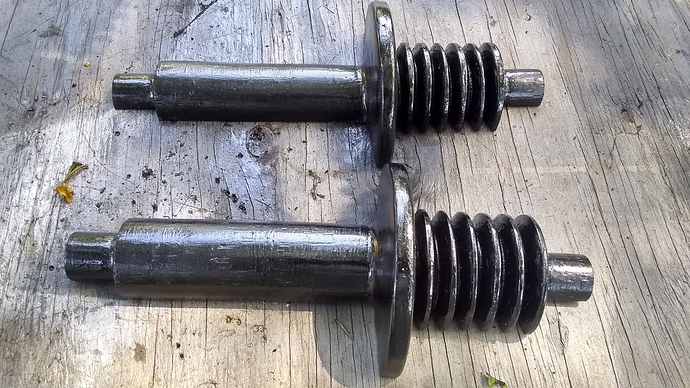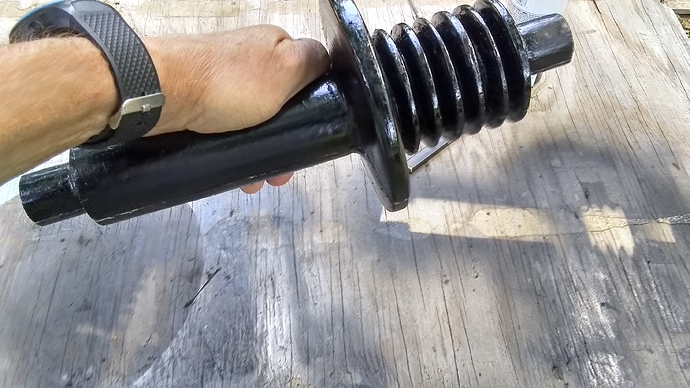Wow! Rindert, that looks awesome. Yes indeed it is a complex part but it looks like you pulled it off.
I really want to try going this direction with my metal melting.
I wonder if this updraft downdraft idea is really necessary, or if a simple fema style would work as well. the text indicates he cracks open the lower air supply when an excess of charcoal is built up.
slso would prefer to use a blower rather that an ejector as he does.
Thoughts??

Andy, I have watched that video of Agua Das at post #26 several times, I want to try that!! Still looking at the build details…
hi jacub another good tip is after cleaning battery cables use a dab os electricle grease, it is called anti corosion, i think. I have drawers of them bloke battery cable conectors for parts too. Ware i really needed the electric grease was my home braker box out by the pole, it was eating brakers at the slide conection till is applied electric grease, think the braker box out on the pole may be leaking in water when it rains.
I noticed on the video that he put a lid on after filling with chips.
Yes, Andy!! So the diagram that shows down-draft air is only what leaks past the loose-fitting lid! Also, did you notice how thick (3"?) the refractory insulation is in the forge proper. Very close to the crucible walls, and the crucible is very near the thick refractory lid. Good insulation is a must, I guess.
I wanted to do this too. After watching the video about 50 times. It finally jogged my memory. I vaguely remember running into someone at the rennaissance festival in the 90s, and he did something similar. IIRC he used the propane as the compressed air source. He was melting brass and making coins or some small trinkets, and claimed he -could- get it to temp with the wood, but it would take too long, and the wood just cut how much propane he used. Plus electric at those booths can be hard to come by especially enough for a compressor. If you see him cast it, you are more likely to buy it, thus the need for speed. He told me it was a Das design, and it was based on a hobo stove. Some festivals don’t allow the wood fire as it is a fire hazard, so if you go to a festival and see someone casting ask them, even if they don’t have one.
I think you could do it with a gilmore or maybe even a fema or I think Matt’s design might be really good. The trick is the ejector.
You might be able to use a fan as a venturi, but I don’t know if that would create enough suction.
Sean,
If you study the video, it is real easy to believe Mr. Das was using propane (instead of compressed air), plus woodgas, to get that much heat and fury. I still want to try it!!
I agree. And it makes it a lot simpler at least for me, to wrap my head around.  Because now you are just looking at a normal propane ejector attached to the gasifier with a tee for air additional air.
Because now you are just looking at a normal propane ejector attached to the gasifier with a tee for air additional air.
I think he started it on propane to get the airflow to get the gasifier started, Then after it got going he used the gasifier to maintain the heat in the system ie like warming up the crucibles and maintaining the furnace temp between melts/demos.
Ive just finished making an ejector to suck a gasier for metal casting. I used a 1inch pipe cross drilled with a 1/4 inch hole. A 1/4 inch copper tube with a #70 hole .0275"
Running about 100 psi air pressure I get 2" WC of vacuum at the back end.
Is this enough to draw on the gasifier?
Aqua Das used a #80 drill .0135, but i didnt have one That small.
Would a smaller orfice at the same pressure give more velocity and thus more vacuum? Or lesss overall flow and thus less vacuum?
Hi Andrew
I suppose that the size of the ejector hole modifies the quantity of secondary air injected (air / gas mixture + - rich)
Do you think that gasifier generates more energy efficiency than a crucible placed on a bed of hot coal?
Thierry
He actually has a valve that he adjusts to control the mixture.
You CAN fire a foundry furnace with charcoal, but Das’ setup uses whole wood so it uses less fuel, and probably a little less labor.
Yes, I plan also to use another valve to control fuel air mixture. That is to say add more air if needed. No way to make it richer though.
Aqua indicates it uses considerably less fuel than just direct burning of it.
do you think the foundry used propane as the compressed air for the injector or did he just charge the propane tank with air from a small compressor. everything looks good even easy to figure out but was just wondering the injector pressure source and if he used a regulater on the pressure line or just a valve to control the amount of pressure. also do you think it could be up sized for a bigger foundry
The drawing shows 100 psi for the injector. Text description says he us3d a recycled refriderator comppressor to feed it. Also said he recommended to sweeten tne flame with pripane unti the foundry got hot enought to sustain ignition.
yes i found the artical again. I knew i had it but couldnt find it yes he used propane to start it then used a refriderator compressor to keep the injector working . must have had two valves for the injector one for the propane one for the air? it was a good artical only to short have you used it yet to melt anything. I have a foundry for aluminum but i havent used it fr a while it was for charchoal and coal worked great but havent been in good shape for the last 10 years lot of heart problems i think i am better now maybe will get back into it.
So here is my first honest to goodness wood split pattern.
It is for my experimental aluminum nozzle for the simple fire.
By making the fins annular instead of radial, and also making the mounting flange flat instead of curved, it will be possible to withdraw from a greensand mold. The old design had to be lost foam.
Added bonus, by making a flat mounting on the gasifier, I can easily swap out a steel flute nozzle.,
Now I just have to make a core box for the finned interior hole.
Looks great! What about placing a core steel pipe in the greensand mould and cast the alu around? Or is that the plan?
Thats an idea worth trying! I was planning to make fins inside like the other one.


